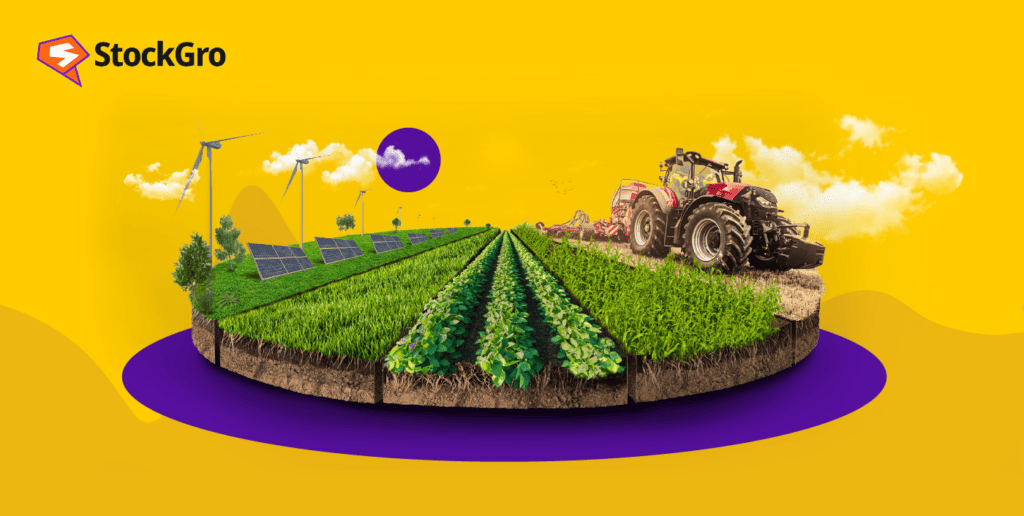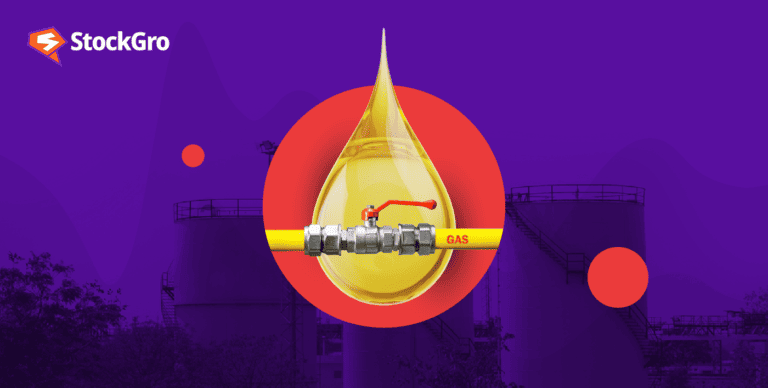
India is among the biggest producers of dairy products, spices, and pulses worldwide. About half of India’s workforce is employed in the agriculture industry, home to the second-largest agricultural acreage globally. As per the sources, the amount of rice produced by Indian farmers was around 1308.37 lakh tonnes in the year 2022-23.
With so much room for value addition, Indian agri-based businesses are set up for massive expansion, contributing more to the global food trade each year.
Undoubtedly, the agricultural industry remains the most valuable sector for the Indian economy to date, despite its inability to reach its full potential. In today’s article, we will look into the history, future, and current scenario of one of the oldest sectors of India.
What is the agriculture sector?
Businesses whose primary operations include cultivating crops and breeding animals are included in the agriculture industry. It is an economic sector that covers the production of crops and animals in addition to agricultural engineering and the manufacturing of machinery, fertilisers, and other items required to support farming.
The main agricultural products fall into four categories: energy sources, foods, fibres, and raw materials.
Approximately one-third of the food produced worldwide is now produced on small farms, but big farms are still seen as dominating. Technological advancements have also impacted the industry and have improved it dramatically thanks to agronomy, plant breeding, and agrochemicals like fertilisers.
You may also like: The pharmaceutical industry in India and its contribution to the world
History of the agriculture industry in India
Indian agriculture has a long and rich history, dating back to the Indus Valley Civilization. India has been among the world’s most prominent producers of wheat, potatoes, spices, tea, fruits, vegetables, and more since its independence in 1947.
Over the years, expanding both rural and urban affluence also contributed to the growth of appealing possibilities in the Indian agricultural industry, and the country’s growing population became a primary demand driver for agricultural goods.
Following the year 2000, crop production was significantly increased due to new policies and technological adoption. Among the significant highlights of this time are:
- More widespread use of technology
- An increase in agricultural credit
- NFSM to boost commodity output
- Record output was made possible by initiatives like the National Horticulture Mission (NHM) and Bringing Green Revolution in Eastern India (BREI).
Indian agriculture has advanced significantly, with food grain production rising from 69.3 million tonnes in the 1960–1961 financial year to 329.687 million tonnes in the 2022–2023 fiscal year.
Indian agriculture sector today
India’s agriculture sector was valued at $435.9 billion in 2022 and is estimated to grow to $580.82 billion by 2028.
With 70% of revenues from retail, the Indian food and grocery sector is the sixth biggest globally. In FY23, India exported US$43.37 billion of agricultural and processed food goods.
The country’s overall horticultural output is expected to reach a record 351.92 million tonnes in 2022–2023. The government has recently launched several significant investments, initiatives, and funding efforts in the agriculture-based industries in India. Agricultural services also received $4.75 billion in foreign direct investment between April 2000 and June 2023.
The industry has also seen a substantial export increase during the last 12 months. India exported US$ 53.12 billion of agricultural and processed food items from 2022 to 2023. Wheat, oil, sugar, non-basmati rice, and spices are among the primary commodities that India exports.
Also read: Textile industry in India – The foundation of fashionable clothing trends
Future of the Indian agriculture industry
The upcoming years could see improved momentum in India’s agriculture industry due to rising investments in infrastructure related to agriculture, including cold storage, warehouse space, and irrigation systems. Moreover, the increasing use of GM crops is anticipated to enhance the productivity of Indian farmers.
Thanks to growing internet access in rural areas and increasing farmer knowledge, the number of agtech start-ups in India expanded from fewer than 50 in 2013 to over 1,000 in 2020. By 2030, agtech may boost the Indian economy by $95 billion.
The Indian government has also launched various pilot programmes and changed policies to promote technology and innovation in the agriculture industry. Among these initiatives is a $750 million financing plan to set up over 10 thousand FPOs (farmer–producer organisations) over the following five years.
How the government is helping the agriculture sector in India?
Government programmes, in addition to technology, are also in place to help Indian farmers. One agricultural insurance programme that allows farmers to financially recover crop losses due to extreme weather or other unexpected events is the Pradhan Mantri Fasal Bima Yojana (PMFBY).
The Pradhan Mantri Kisan Samman Nidhi (PM-KISAN) is another project that helps marginal and small-scale farmers buy agricultural supplies like seeds and fertilisers by offering them financial support.
Top agri stocks in India by market capitalisation
Below is a list of the largest agriculture-based industries in India, ranked based on their market capitalisation (as of December 7, 2023)
| Company | Stock price (₹ ) | Market cap (₹ cr) | Net profit (₹ cr) |
| Bombay Burmah | 1,379.90 | 9,628.17 | -229.24 |
| Kaveri Seed | 619.75 | 3,461.56 | 267.04 |
| Goodricke Group | 193.90 | 418.93 | -0.32 |
| Indo US Bio-Tec | 199.00 | 391.01 | 7.24 |
| Nath Bio-Genes | 195.95 | 370.96 | 35.17 |
Also read: The role of the energy sector in powering India’s growth.
Should you invest in agriculture stocks?
When it comes to picking a favourite in the agriculture vs. manufacturing industry in India debate, acquiring Indian agriculture stocks might offer excellent potential for both financial gain and sectoral influence. A few such factors are:
- Stability: Investing in the agricultural industry offers investors a stable option.
- Importance in the global economy: Agriculture is an essential industry that is tightly knit into all economies.
- Cyclical potential: Stocks in the agriculture industry may gain from cyclical patterns.
- Prospect over time: Investing in agriculture has the potential to expand steadily because of its long-term nature.
- Diverse development opportunities: The stocks in the agriculture sector cover areas other than producing food, including textiles, biofuels, and medicines.
Conclusion
To sum up, the Indian agricultural industry has recently made remarkable progress using diverse technology, regulations, and economical and eco-friendly farming practices.
Farmers are now more productive, efficient, and profitable because of government incentives, machinery, and agricultural precision usage. If these technologies and regulations are updated, Indian agriculture has an exciting future and will be crucial to the country’s economic growth.

